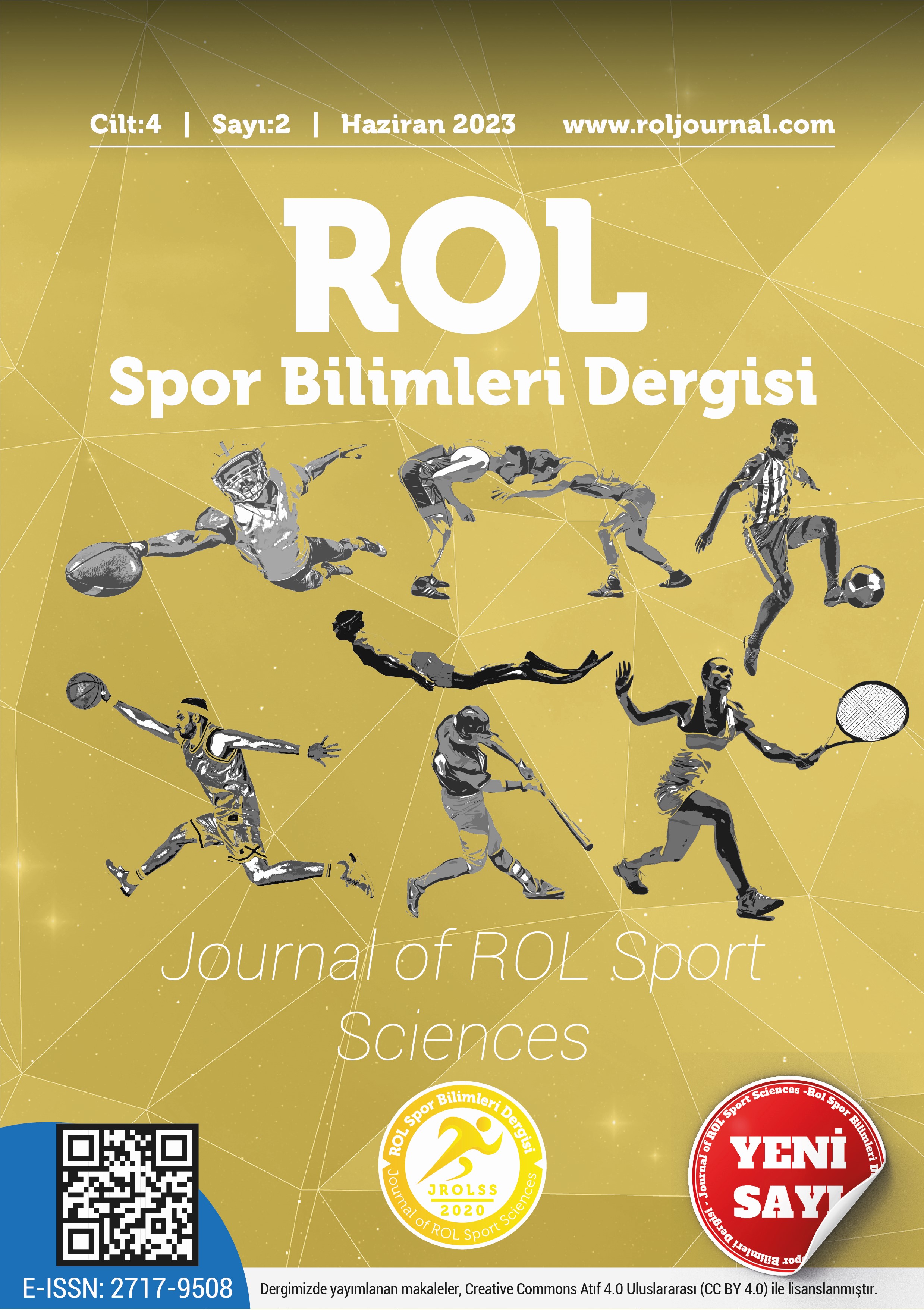Investigation of the effects of b-fit exercise protocol applications on anthropometric parameters of young women
DOI:
https://doi.org/10.5281/zenodo.8010604Keywords:
Anthropometric measurements, B-Fit exercises, Young female İndividualsAbstract
B-fit gyms were established in 2006 to offer women who do not have much knowledge and experience in physical activity and exercise the opportunity to exercise correctly and effectively. The B-fit exercise protocol applied in these halls consists of resistance and aerobic exercises aimed at working all muscle groups of the body. When the studies examining the B-fit exercise protocol in the literature are examined, it is not stated that the ages of the research participants have a wide range and how many participants are at what age. Therefore, this study is important in terms of clearly revealing the effects of the B-fit exercise protocol on the anthropometric characteristics of young female participants (18-20 years old). Twenty-two female participants between the ages of 18-20 who do sports at least 5 days a week in B-fit Sports Centers and do not follow any diet program participated voluntarily in this descriptive, cross-sectional study. At the beginning of the study, the mean body weight of the participants was 76.50±18.80, and the mean height was 165.13±4.44. Participants participated in the B-fit exercise protocol five days a week for eight weeks. During the study, the participants were asked to continue their daily routines and not make any changes in their eating habits. When the research findings were examined, it was observed that there was a statistically significant difference between the pretest-posttest averages of the participants' body weights, waist, chest, hip, abdomen, leg, arm and thigh circumferences (p<0.05).
References
Aktuğ, Z. B., Murathan, F., & Dündar, A. (2019). Investigation of the effect of b-fit exercises on anthropometric characteristics in women. Gaziantep Üniversitesi Spor Bilimleri Dergisi, 4(1), 1-10.
Ali, Z. M. I., El-Refay, B. H., & Ali, R. R. (2015). Aerobic exercise training in modulation of aerobicphysical fitness and balance of burned patients. Journal of Physical Therapy Science, 27(3), 585-589.
Andreasson, J., & Johansson, T. (2014). The fitness revolution: historical transformations in the global gym and fitness culture. Sport Science Review, 23(3-4), 91-112.
B-Fit (2006, Nisan 01). Kadınların spor ve yaşam merkezi http://www.b-fit.com.tr.
Callaway, C. W., Chumlea, W. C., Bouchard, C., Himes, J. H., Lohman, T. G., Martin, A. D., … et al. (1988). Circumference in anthropometric standardization reference manual, Human Kinetics Books.
Ferrand, A., Robinson, L., & Valette, P. (2010). The intention-to-repurchase paradox: A case of the health and fitness industry. Journal of Sport Management, 24(1), 83-105.
George, D., & Mallery, P. (2010) SPSS for windows step by step: a simple guide and reference, Pearson.
Günay, A., Odabaş, H. İ., Altan, B. K., & Usta, G. (2021). Comparison of the effects of B-Fit™ exercises on body composition by age in women. Turkish Journalof Sports Medicine, 56(3), 113-119.
İlbak, İ., & Bayer, R. (2021). Investigation of the effects of B-fit exercise practices on some anthropometric parameters of sedentary women. Akdeniz Spor Bilimleri Dergisi, 4(3), 342-349.
İlbak, İ., Düz, S., & Bayer, R. (2022). The effects of an eight-week b-fit exercise protocol on the anthropometric parameters of sedentary women. Çanakkale Onsekiz Mart Üniversitesi Spor Bilimleri Dergisi, 5(1), 1-9.
Jitwil, A., Pitil, P. P., & Wahed, W. J. E. (2019). High-intensity interval training and high-intensity resistance training on body fat percentage and aerobic fitness among female over weight adults. Malaysian Journal of Sport Science and Recreation, 15(2), 25-34.
Kafkas, M. E., İlbak, İ., Eken, Ö., Çınarlı, F., Yılmaz, N., & Şahin-Kafkas, A. (2018). Acute effect of different warm up protocols on 1- repetition maximum squat performance. Spor ve Performans Araştırmaları Dergisi, 9(3), 192-205.
Kilincarslan, G., Ilbak, I., & Sadir, Y. (2022). Examination of anthropometric profiles of individuals who exercise in the GYM. Pakistan Journal of Medical & Health Sciences, 16(1), 477-479.
Matsuoa, T., Okura, T., Nakata, Y., Yabushita, N., Numaoa, S., & Sasai, H. (2007). The influence of physical activity-induced energy expenditure on the variance in body weight change among individuals during a diet intervention. Obesity Research & Clinical Practice, 1(2), 109-117.
Norizzati, M. I., Sarina, M. Y., Maisarah, S., & Raja, R. H. (2018). Comparison of different exercise modalities in improving metabolic syndrome risk factors among obese females. Malaysian Journal of Movement, Health & Exercise, 7(2), 135-144.
Okura, T., Nakata, Y., Lee, D., Ohkawara, K., & Tanaka, K. (2005). Effects of aerobic exercise and obesity phenotype on abdominal fat reduction in response to weight loss. International Journal of Obesity, 29(10), 1259-1266.
Paoli, A., Moro, T., Marcolin, G., Neri, M., Bianco, A., Palma, A., … et al. (2012). High-intensity interval resistance training (HIRT) influences resting energy expenditure and respiratory ratio in non-dieting individuals. Journal of Translational Medicine, 10(1), 1-8
Swift, D. L., Johannsen, N. M., Lavie, C. J., Earnest, C. P., & Church, T. S. (2014). The role of exercise and physical activity in weight loss and maintenance. Progress in Cardiovascular Diseases, 56(4), 441-447.
Downloads
Published
How to Cite
Issue
Section
License
Copyright (c) 2023 Journal of ROL Sport Sciences

This work is licensed under a Creative Commons Attribution 4.0 International License.



